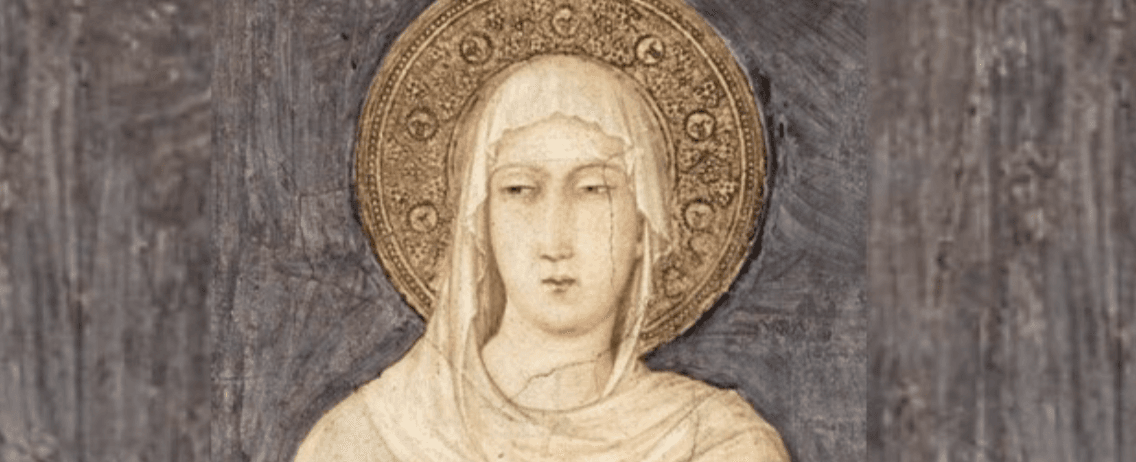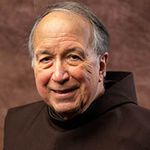Blessed Lady Jacoba: One Spirit with Francis

On February 8, Franciscans honor the memory of Blessed Jacoba (or Jacopa) di Settesoli (c. 1190-1238), a Roman lay woman of an aristocratic family who became a close friend and supporter of St. Francis.
"Lady Jacoba" was born in the vicinity of Rome around the year 1190 into an aristocratic family of Norman origin. As a young woman she married Graziano Frangipane de’ Settesoli, a wealthy Roman nobleman. They had two sons, but Graziano died young, by 1217, leaving Jacoba as administrator of his extensive properties. According to tradition, she met Francis early in her widowhood to seek his guidance. He urged her to remain in her current way of life and serve God in that way. In any case, they built a close, sympathetic relationship, and she often extended hospitality to Francis and his brothers. According to tradition, she was one of the first members of the Brothers and Sisters of Penance (today's Secular Franciscans) in Rome.
Jacoba is best known for her loving presence to Francis as he was nearing death. Francis had written her to come to him, but before the letter was even sent, she arrived at the Portiuncula on her own, bringing a burial shroud and the almond cookies that Francis was so fond of. She cared for Francis in those last days and helped prepare his body for burial.

Medieval depiction of Lady Jacopa carrying the burial shroud she made for Francis
Jacoba returned to Rome after his death and was active in numerous charitable activities. She was instrumental in having the Benedictines turn over to the Friars Minor a hospice for the sick poor, St. Blaise, in the Trastevere quarter, where Francis had often stayed on his visits to Rome; this became the friars' first residence in Rome, San Francesco a Ripa. She also became a major benefactor of the construction of the basilica of San Francesco in Assisi; she herself moved to Assisi in the 1230s.
The most common opinion is that Jacoba died in Assisi on February 8, 1239, although some historians say there is evidence that she lived until 1273. In any case, she was buried near the tomb of St. Francis in Assisi. Her remains were moved to the newer crypt church in 1933.

The remains of Lady Jacopa, in the crypt of the basilica of San Francesco in Assisi
For more information on Jacoba, see Dr. Darleen Pryds' study, Enduring Presence: Diversity and Authenticity Among the First Generations of Franciscan Laity, available here.
At the end of this reflective article, Dr. Pryds provides a contemporary recipe for Lady Jacoba’s tasty almond cookies.
![]()
Icon of Blessed Lady Jacoba
Cover image: Detail of fresco by Simone Martini in the lower basilica in Assisi (abt 1318). Often identified as St. Clare, scholars today tend to believe that it is likely Lady Jacoba due to the trademark seven suns (settesoli) in her halo. Furthermore, she is dressed in secular clothing. Other images of Clare by Martini in the basilica depict Clare in a religious habit.
Dominic Monti, OFM
Professor of Franciscan Research in the Franciscan Institute of St. Bonaventure University
Dominic V. Monti, OFM, is a Franciscan Friar of Holy Name Province (USA) and currently professor of Franciscan Research in the Franciscan Institute of St. Bonaventure University. He devoted the greater part of his ministry to teaching the History of Christianity, in particular the history of the Franciscan movement. He has contributed two volumes to the Works of St. Bonaventure series and is author of Francis & His Brothers, a popular history of the Friars Minor.

